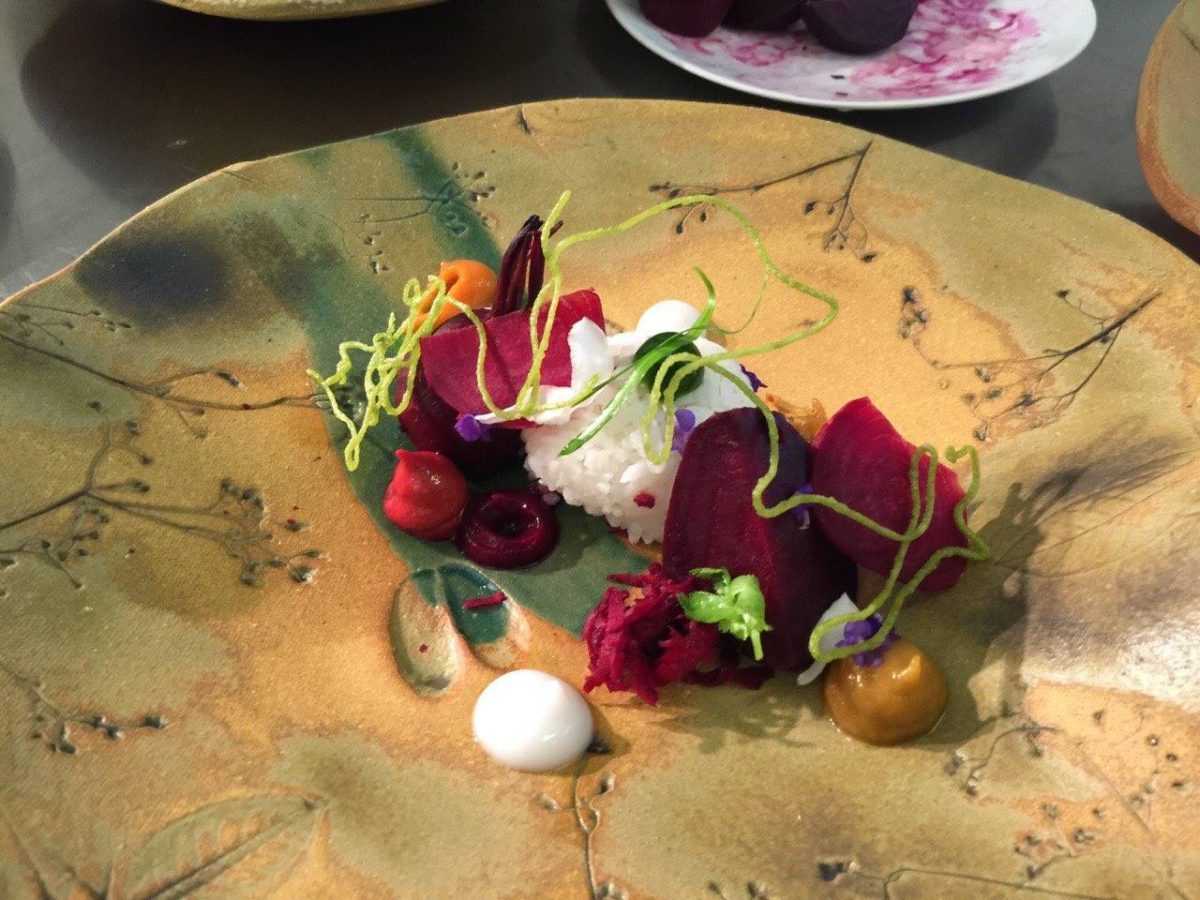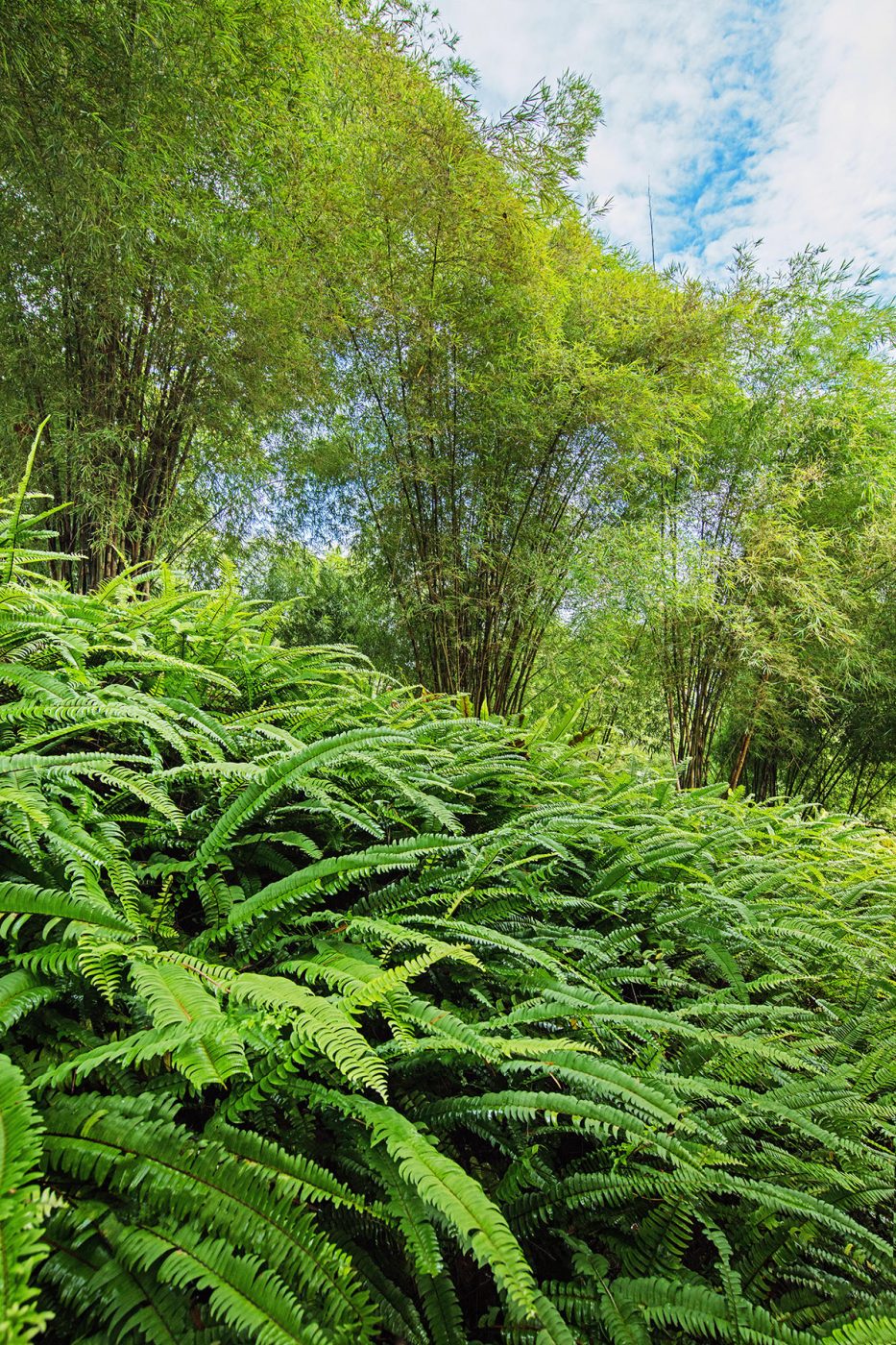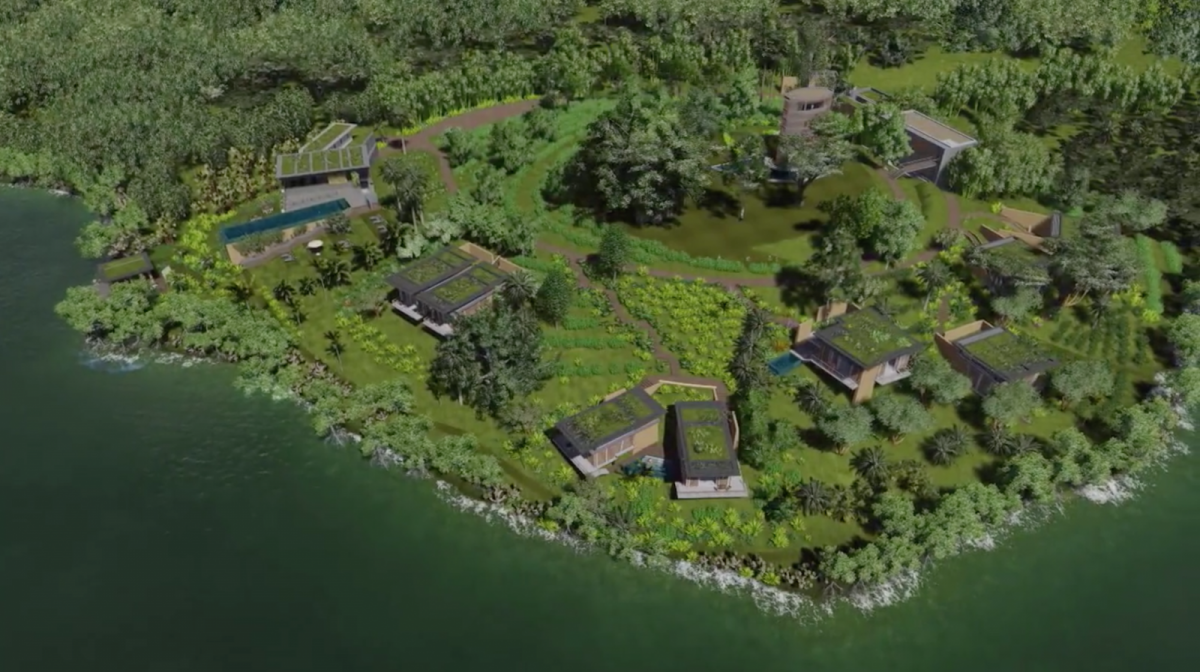Local, seasonal and seriously special is how you would describe Tri in Sri Lanka’s contemporary, creative dishes. Executive Chef Neil Wager put a lot into creating the eating and drinking at this unique Sri Lankan design hotel – from experiencing the close surroundings, the culture and the intense, magical feelings that come from visiting somewhere for the first time. Neil’s earliest thoughts and memories go back to meeting Rob on that first day and exploring the eco-minded boutique hotel when was still being built – first impressions last and his palpable recollections of the surroundings and smells, sights and tastes led to one of the most significant dishes on the menu, the beetroot curry (pictured)…
My first real Sri Lankan food experience is still a vivid memory, and this is what lead to our beetroot curry at Tri – from the plate we serve it on, to the dish itself. I had arrived the day before in Sri Lanka tired but excited. Collected from Colombo airport, a driver took me on the 2.5-hour journey to Rob’s house. It was the first time in the country for me and I was taking everything in. It was hot and humid, but I was so thrilled to be there.
As we left Rob and Lara’s villa on my first morning, as we drove to Tri for the first time I was taking in all around me, looking at the vendors at the side of the road and the food that I could see… Fresh fish laid out on wooden stalls, fresh papayas, rambutans, mangoes all stacked high, the beautiful gold king coconuts. We headed inland, and my senses were awoken more and more as we passed the colourful roadside scenes.
Following the back road to Tri, we talked about the many types of rice we could see being harvested and dried by the side of the road. This was different to any other rice I’d seen in its raw form in South-East Asia. I was set to discover a lot more from an older man I met later at Tri who explained that he had re-introduced old varietals of rice to the area. This gentleman who also recycles the waste at Tri organically grows 12 different types of heritage rice which are what we now incorporate into our menus.
Although Tri was a building site when I first visited, I could see lemongrass and cinnamon trees growing wild. I was free to walk around as Rob attended his daily site meeting. I strolled alongside the lakeside and encountered a huge monitor lizard – it made me appreciate the rawness of where I was. Talking to the builders on site they pointed out to me in broken English the plants they knew – hathawariya, polpala, gotukola, mukunuwenna and fresh curry leaves. Not knowing much about what these ingredients were yet, I took it all in and tasted everything I could, only to discover these make up the national soup dish kola kenda which I would then have made for me the following day for breakfast by the ladies who look after Rob’s house.
Sitting by the lakeside I was presented with a newspaper-wrapped lunch pack. Eating with my fingers I tried the real taste of a Sri Lankan curry for the first time – hot, slightly sweet beetroot curry, with mukunuwenna, smoky green bean sambal, earthy red rice, and a dhal so intense with flavour that this was in a sense a whole new cuisine to me. I sat on the edge of what is now the pool, my legs dangling over the top of an empty space, crumbled newspaper on my lap, watching the locals eat using their fingers to claw together the dhal as a binding ingredient to eat pieces of curry and rice in their hands – I copied them. As I sat there using my fingers, I had an incredible moment to myself, looking down tasting mukunuwenna, devouring the earthy, deep flavour, I could taste the healthy green elements going together. This gave me the vision of my first dish.
Later we met with a crockery designer, Ajit. Between us we designed a plate (see image featured) that reimagines that first plate of beetroot curry, it resembles crumbled folded out paper with unique markings, and the colours which are from the surrounding areas. Baking the beetroot first in cardamom salt, using fresh cardamom pods with our own sea salt sourced from the coast which is only 10 minutes away. Then there is a dhal puree, mukunwenna mallum, mukunuwenna a herb used in Ayurveda that grows along the road to the entrance to Tri – its simple, earthy flavours mixed with grated coconut is a natural delight. We turn this into a puree, blanching the natural herb then mixing it with a touch of agar we turn this into a liquid gel. This is a modern creation of cooking that gives a fluid sauce which is completely pure in taste. Many of the local ingredients we have manipulated the same way, deconstructing and reusing their simple flavours to give a modern contemporary tang and to create a unique cuisine for Tri. For texture I have made mukunuwenna jalebi – the jalebi is an Indian sort-of doughnut that that I use to create texture and a little bite to the dish.
All of the dishes we have created so far we take influences and touches of local ingredients, dishes and cooking techniques. We have even adapted sushi and sashimi to have Sri Lankan flavours. Ambu thiyal, black tuna curry with kiribath rice, we have adapted to nigiri sushi, the tuna belly is marinated in the black curry spice and seared, we lay this over the coconut red rice usually eaten with the dish, and you have a reinterpreted ambu thiyal, but the sushi we will go through in another blog post. Each day, as we learn more about the flavours and influences, we bring them into our cuisine, too. Every day at Tri is enlightening and inspiring.
Consultant Chef, Neil Wager, has almost three decades of experience working across nearly every continent from the Breakers Hotel in Palm Beach at an early age to London, Cornwall, and St Lucia. Time at the Dorchester Hotel and the iconic Quaglino’s was followed by spells in Thailand and Australia then high-end sporting occasions around the world (including 163 International Formula 1 Grand Prix and International PGA events). Career highlights have included co-writing Everyday Novelli, developing recipes with Michelin-starred chef Jean-Christophe Novelli, and working with David Beckham and the Duchess of York (on her WeightWatchers’ range). The Executive Chef has made waves in North Island Seychelles and he launched Song Saa Island Resort in Cambodia, also winning accolades for his time at Nihiwatu Luxury Resort in Sumba Indonesia, Segera Retreat in Kenya and South Kensington Club in London.




